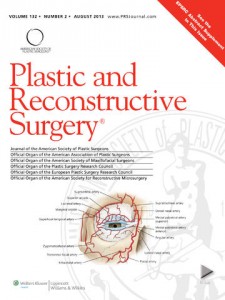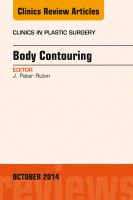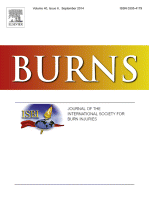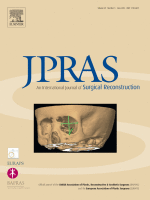Scheuer, Jack F. III et als.
Plastic & Reconstructive Surgery – January 2017 – Volume 139 – Issue 1 – p 50–58

Scheuer, Jack F. III et als.
Plastic & Reconstructive Surgery – January 2017 – Volume 139 – Issue 1 – p 50–58

Publicado: . En: Artículos recomendados. ![]()
Gusenoff, J.
Clinics in Plastic Surgery, 2014-10-01, Volúmen 41, Número 4, Pages 805-818
 This patient safety article discusses strategies to prevent, diagnose, and manage complications from body contouring surgery. Preoperative, intraoperative, and postoperative approaches to avoiding, identifying, and treating complications are addressed. Individual complications, such as hematoma, seroma, infection, dehiscence, suture extrusion, deep venous thrombosis, and pulmonary embolism are discussed and a review of complication rates in the body contouring literature is provided. The article addresses procedure-specific complications and pearls to avoiding complications in these cases. Difficult problems such as skin relaxation and management of the disappointed patient are also discussed.
This patient safety article discusses strategies to prevent, diagnose, and manage complications from body contouring surgery. Preoperative, intraoperative, and postoperative approaches to avoiding, identifying, and treating complications are addressed. Individual complications, such as hematoma, seroma, infection, dehiscence, suture extrusion, deep venous thrombosis, and pulmonary embolism are discussed and a review of complication rates in the body contouring literature is provided. The article addresses procedure-specific complications and pearls to avoiding complications in these cases. Difficult problems such as skin relaxation and management of the disappointed patient are also discussed.
Publicado: . En: Artículos recomendados, Propuesta del editor. ![]()
Norman G, Dumville J, Moore Z, Tanner J, Christie J, Goto S.
Cochrane Database of Systematic Reviews 2016 Issue 4. Art. No.: CD011586. DOI: 10.1002/14651858.CD011586
 Las úlceras de decúbito, también conocidas como escaras, úlceras por presión y lesiones por presión, son áreas localizadas de lesión de la piel o el tejido subyacente o ambos. Para el tratamiento de las úlceras de decúbito se utilizan varios tratamientos con propiedades antimicrobianas, incluidos los apósitos impregnados. Esta revisión es una de un conjunto de revisiones Cochrane que investigan el uso de antisépticos y antibióticos en diferentes tipos de úlceras. También forma parte de un conjunto de revisiones que investigan el uso de diferentes tipos de apósitos y tratamientos tópicos en el tratamiento de las úlceras de decúbito.
Las úlceras de decúbito, también conocidas como escaras, úlceras por presión y lesiones por presión, son áreas localizadas de lesión de la piel o el tejido subyacente o ambos. Para el tratamiento de las úlceras de decúbito se utilizan varios tratamientos con propiedades antimicrobianas, incluidos los apósitos impregnados. Esta revisión es una de un conjunto de revisiones Cochrane que investigan el uso de antisépticos y antibióticos en diferentes tipos de úlceras. También forma parte de un conjunto de revisiones que investigan el uso de diferentes tipos de apósitos y tratamientos tópicos en el tratamiento de las úlceras de decúbito.
Publicado: . En: Artículos recomendados. ![]()
Warren, R; Aston, S; Mendelson, B.
Plastic and Reconstructive Surgery, December 2011 – Volume 128 – Issue 6 – p 747e–764e
 The ability to surgically rejuvenate the aging face has progressed in parallel with plastic surgeons’ understanding of facial anatomy. In turn, a more clear explanation now exists for the visible changes seen in the aging face. This article and its associated video content review the current understanding of facial anatomy as it relates to facial aging. The standard face-lift techniques are explained and their various features, both good and bad, are reviewed. The objective is for surgeons to make a better aesthetic diagnosis before embarking on face-lift surgery, and to have the ability to use the appropriate technique depending on the clinical situation.
The ability to surgically rejuvenate the aging face has progressed in parallel with plastic surgeons’ understanding of facial anatomy. In turn, a more clear explanation now exists for the visible changes seen in the aging face. This article and its associated video content review the current understanding of facial anatomy as it relates to facial aging. The standard face-lift techniques are explained and their various features, both good and bad, are reviewed. The objective is for surgeons to make a better aesthetic diagnosis before embarking on face-lift surgery, and to have the ability to use the appropriate technique depending on the clinical situation.
Publicado: . En: Artículos recomendados, Propuesta del editor. ![]()
Hamnett, K. E; Subramanian, A.
Journal of Plastic, Reconstructive & Aesthetic Surgery, 2016-10-01, Volúmen 69, Número 10, Pages 1325-1334
 Women not undergoing breast reconstruction after mastectomy tend to be older. This review aims to aid in effective, evidence-based choices regarding breast reconstruction in an older population, appraising the influencing patient factors described in the literature and those directing the reconstructive surgeon. This may refute current misconceptions and ensure surgical decisions are made based on evidence without ageist assumptions. The review forms the basis of an evidence-based algorithm addressing each step of the decision-making process.
Women not undergoing breast reconstruction after mastectomy tend to be older. This review aims to aid in effective, evidence-based choices regarding breast reconstruction in an older population, appraising the influencing patient factors described in the literature and those directing the reconstructive surgeon. This may refute current misconceptions and ensure surgical decisions are made based on evidence without ageist assumptions. The review forms the basis of an evidence-based algorithm addressing each step of the decision-making process.
Publicado: . En: Artículos recomendados. ![]()
ISBI Practice Guidelines Committee
Burns. 2016, 42(5): 953-1021
 Practice guidelines (PGs) are recommendations for diagnosis and treatment of diseases and injuries, and are designed to define optimal evaluation and management. The first PGs for burn care addressed the issues encountered in developed countries, lacking consideration for circumstances in resource-limited settings (RLS). Thus, the mission of the 2014–2016 committee established by the International Society for Burn Injury (ISBI) was to create PGs for burn care to improve the care of burn patients in both RLS and resource-abundant settings. An important component of this effort is to communicate a consensus opinion on recommendations for burn care for different aspects of burn management.
Practice guidelines (PGs) are recommendations for diagnosis and treatment of diseases and injuries, and are designed to define optimal evaluation and management. The first PGs for burn care addressed the issues encountered in developed countries, lacking consideration for circumstances in resource-limited settings (RLS). Thus, the mission of the 2014–2016 committee established by the International Society for Burn Injury (ISBI) was to create PGs for burn care to improve the care of burn patients in both RLS and resource-abundant settings. An important component of this effort is to communicate a consensus opinion on recommendations for burn care for different aspects of burn management.
Publicado: . En: Artículos recomendados. ![]()
Chatel, H. et als.
Journal of Plastic, Reconstructive & Aesthetic Surgery, 2016-05-01, Volúmen 69, Número 5, Pages 700-705
 Persistent postsurgical pain (PPP) has been reported by patients following various surgeries. Body contouring procedures are being performed more frequently, but no data are available regarding the effects of these procedures. Long-term disability occurring after performing “functional” procedures on healthy subjects is a particular concern. The aim of this study was to describe the risk factors, prevalence, characteristics, and effects of persistent pain after body contouring procedures.
Persistent postsurgical pain (PPP) has been reported by patients following various surgeries. Body contouring procedures are being performed more frequently, but no data are available regarding the effects of these procedures. Long-term disability occurring after performing “functional” procedures on healthy subjects is a particular concern. The aim of this study was to describe the risk factors, prevalence, characteristics, and effects of persistent pain after body contouring procedures.
Publicado: . En: Artículos recomendados, Propuesta del editor. ![]()
Los lectores comentan